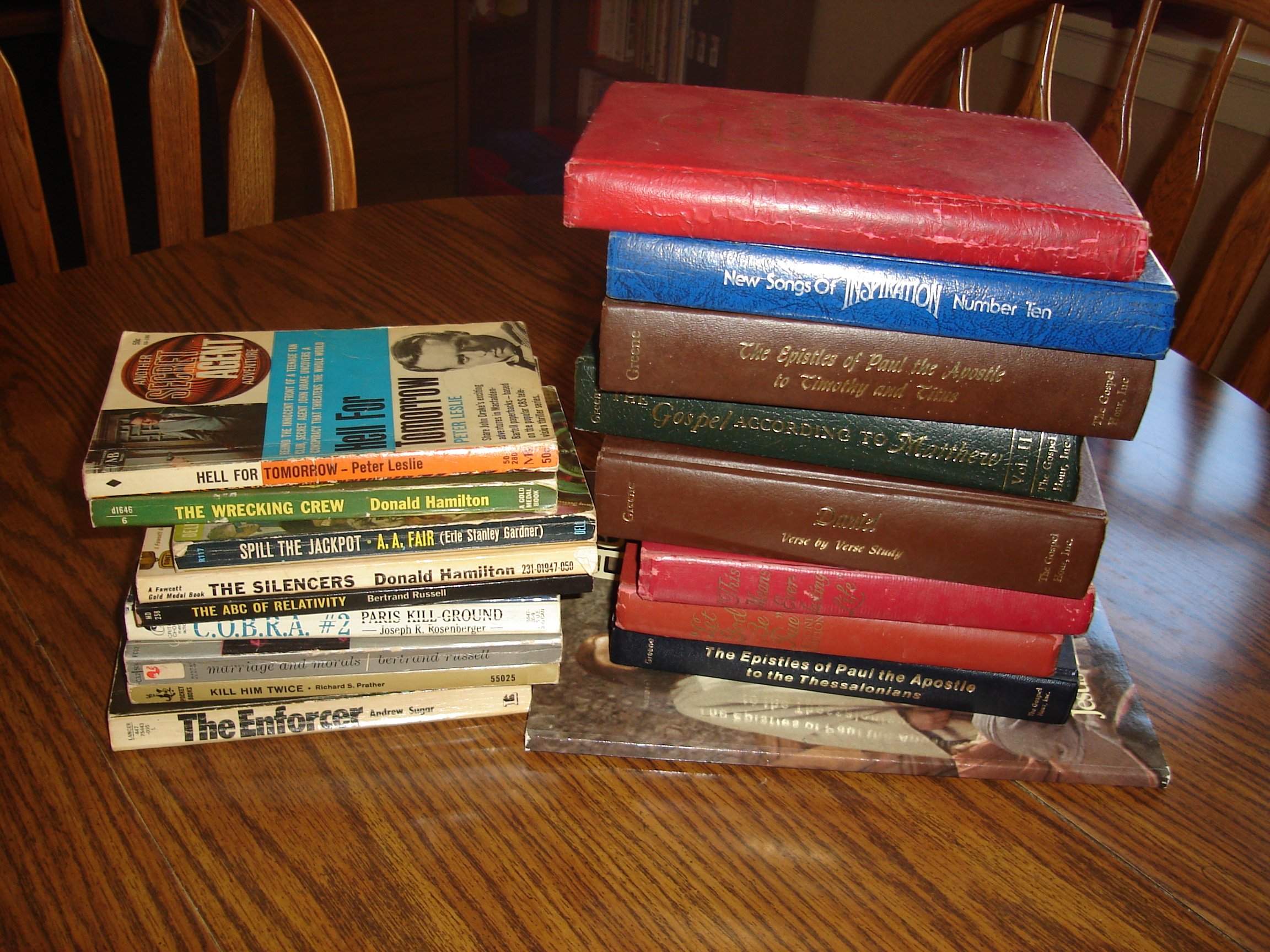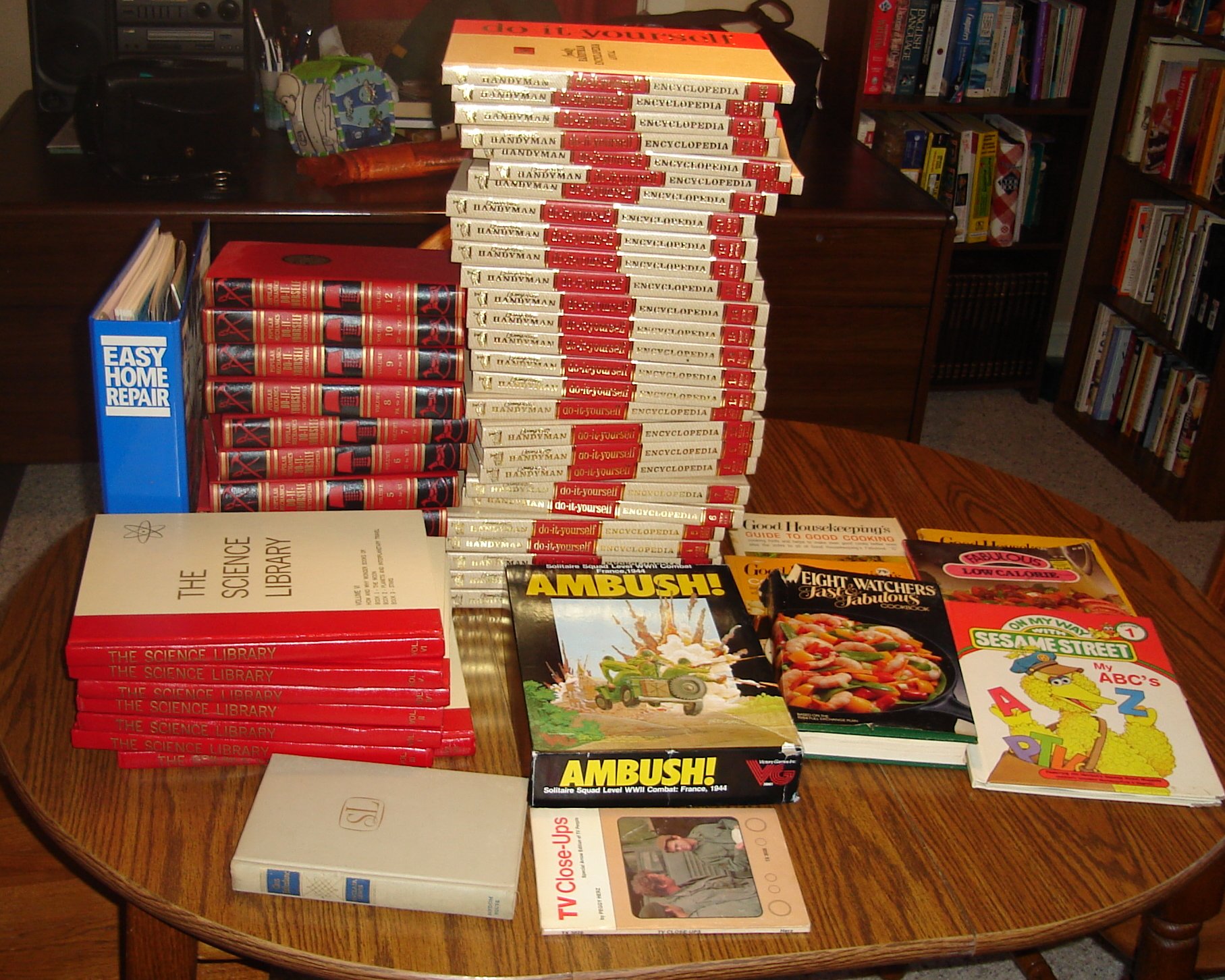Well, it has been a while since I told you about what I’ve bought as far as books go, but that’s because we spent Saturday mornings in the latter part of October looking at sport utility vehicles and minivans because although one can sort of fit a single child seat into the back of a Mitsubishi Eclipse with only slight discomfort for the passenger, two child seats would be impossible. So for a span of a couple of weeks, I bought no books.
Fortunately, though, on Sunday, November 4, my mother and I found an estate sale in Lemay. Within a tiny house in one of the older parts of Lemay on a street that ultimately connected to a newer part with larger homes and lawns, some assorted odds and ends remained from a household recently and fairly suddenly emptied. However, in the basement, several boxes of books, mostly paperbacks, lay unpriced. The assortment was rather eclectic; romance novels, 60s detective pulp, philosophy, literature, and some of those paperbacks your grandfather used to keep hidden.
I picked a couple out:

Click for full size
My selection includes a couple of Matt Helm novels (I read one earlier this year and watched the Dean Martin movies in the last two years), the first of the Enforcer novels (I read the third earlier this year), a Richard S. Prather Shell Scott novel (I singlehandedly drove blogger Robert Prather from the Web by commenting every time he guest posted on myriad blogs that I loved the Shell Scott novels), and whatnot.
You want the full list? Click and look. The stack to the right are some theologically-flavored tomes I bought for my beautiful wife.
It was only when I got to the counter, manned by the daughter of the fellow who had to take a book everywhere, that I discovered that paperbacks were a dime and hardbacks were a quarter; it’s a good thing I didn’t know earlier, or I’d have had boxes of smoky and musty pulp to show you.
Then, last weekend, we actually hit some yard sales in our suburb. Global warming is pushing garage sale season into November; now that we have a full SUV, I am driving it up and down the block to help push garage sales in Missouri into January.
At any rate, here’s what we got:

Click for full size
I’m not saying that reading Farnham’s Freehold affected my thinking at all, but I did find my basic skills reference works lacking. So I bought, for $25, a seven volume set called The Science Library, a 27 volume set called The Complete Handyman Do-It-Yourself Encyclopedia, and 11 of 12 volumes of the Popular Mechanics Do-It-Yourself Encyclopedia; oddly enough, of the latter, I lack volume 11. My mother has this set, too, and she’s missing volume 11, too. Hmmm. I wonder if that’s where they put all the neat do-it-yourself nuclear things.
The fellow also threw in the free sample starter pack of the Easy Home Repair binder series. These were sold by packets you could stick into the binders, kind of like those old boxes of recipe cards. I only got the first set, still in its plastic cellophane, and the binder. That’s okay, though; my mother also owns the complete set of these, and I’ll own them all myself far too soon.
Additionally, I bought a book called TV Closeups, a 1974-1975 book produced by Scholastic or some other children’s book publisher that ties into television and a copy of Sinclair Lewis’s Cass Timberlane. And a copy of the 1984 game Ambush, a solitaire war game.
So I’ve added a pile, but not much for my to-read shelf. Regular garage and estate sale stuff has resumed. Thank you, that is all.




